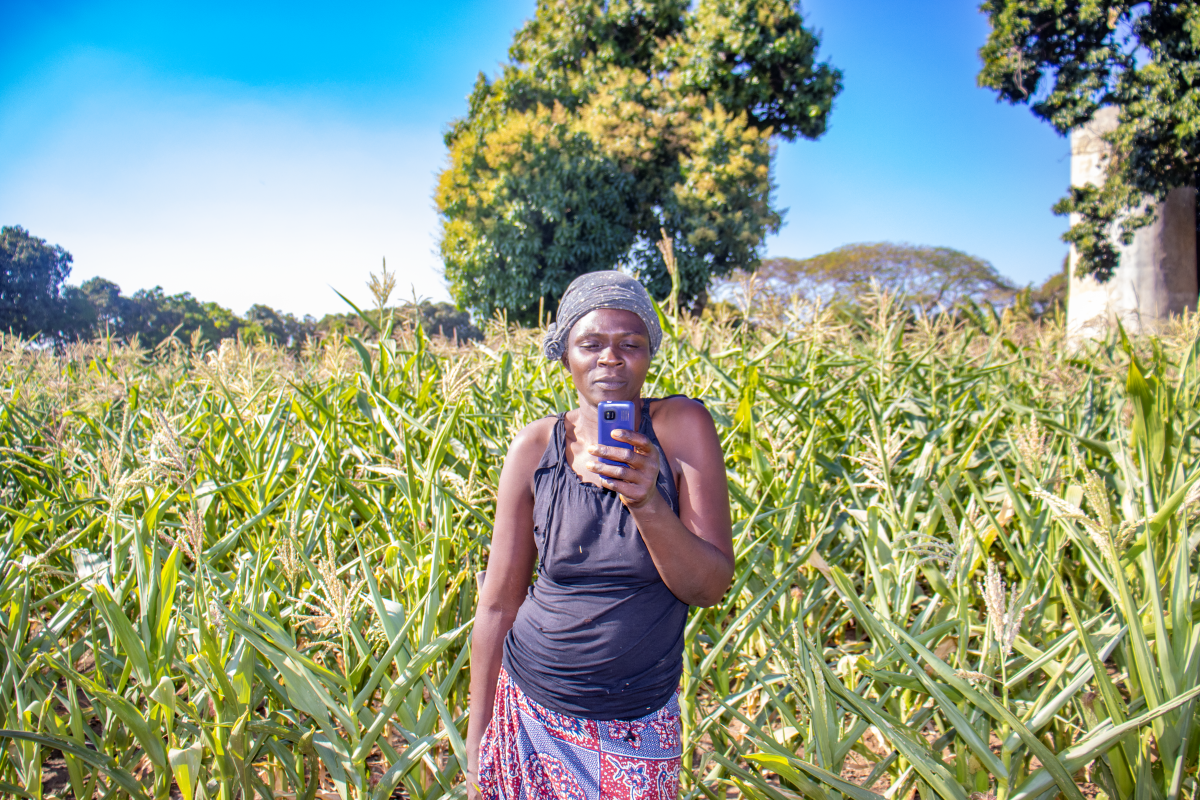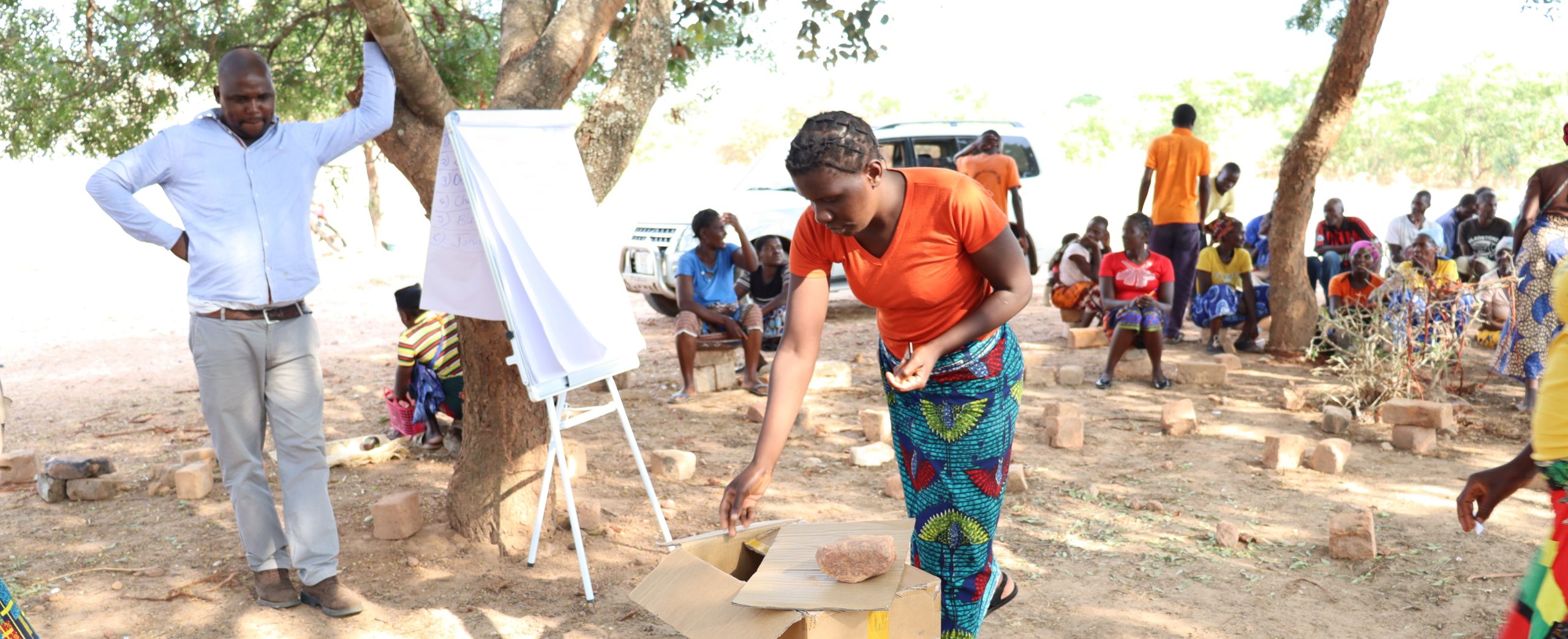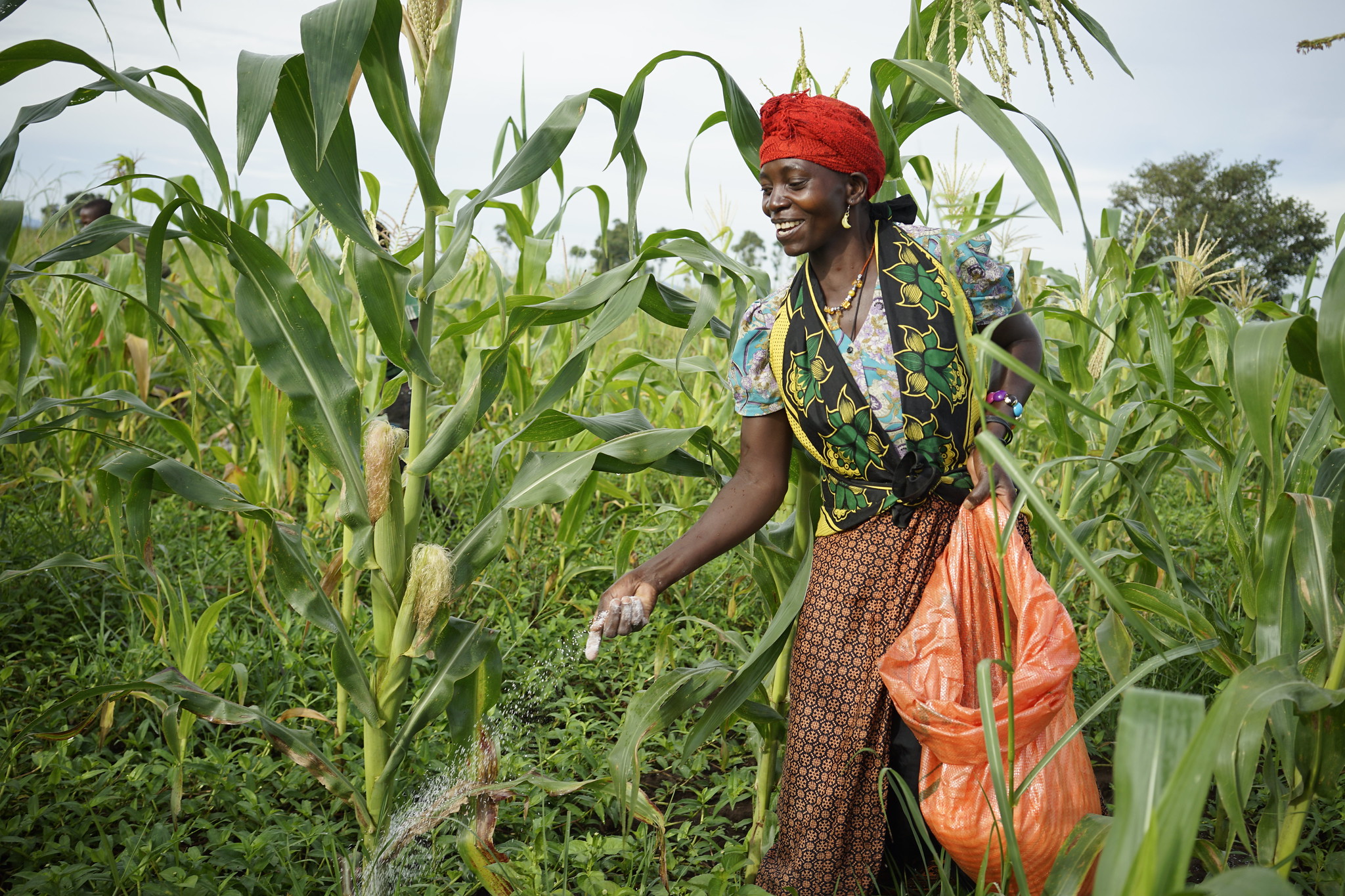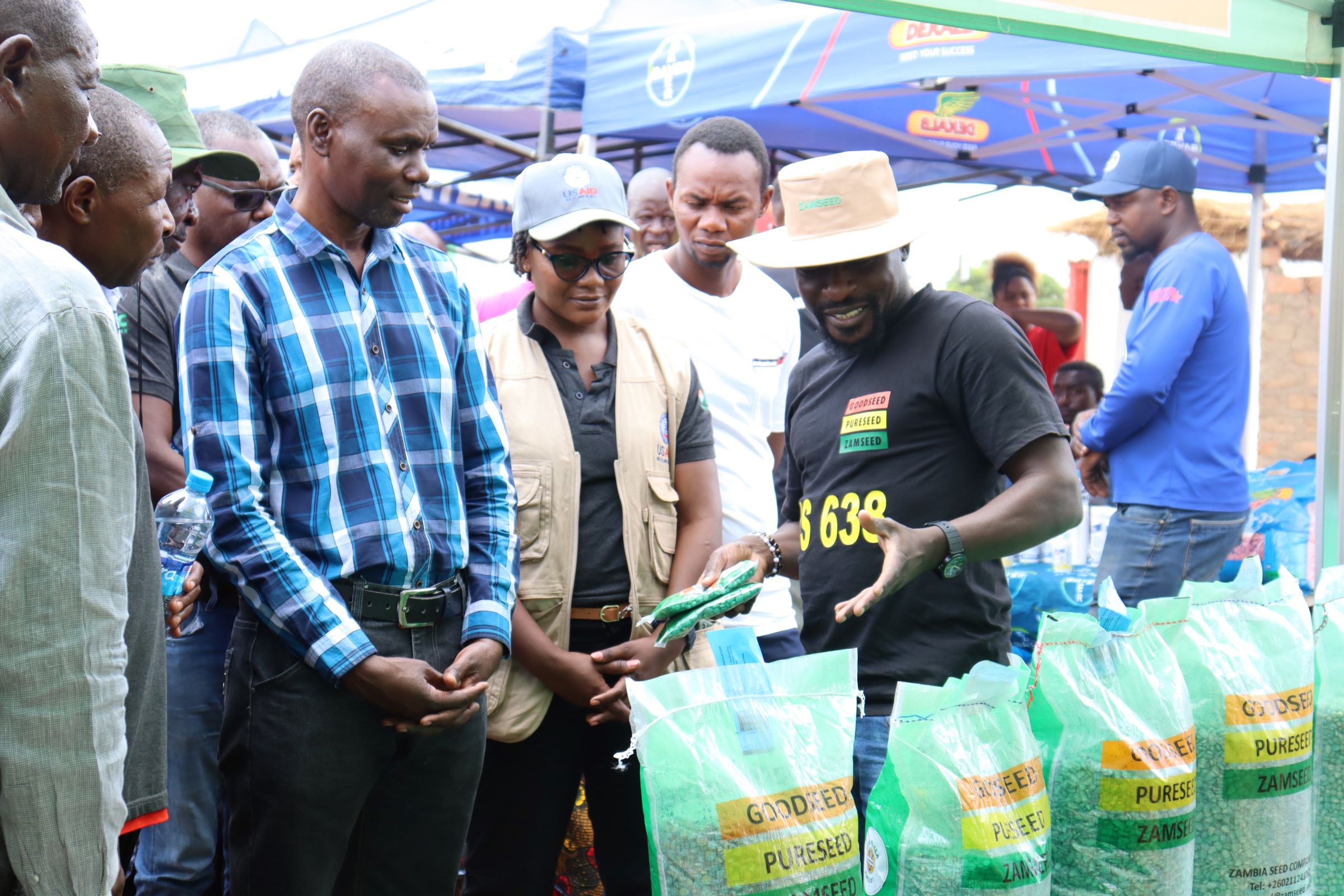
Listening First: Farmers at the Center
When farmers in Zambia call Atubandike’s toll-free number (667), they have three minutes to share their challenges and concerns – in their own words and in their own languages, whether Bemba, Lozi, Nyanja, or Tonga. These calls are not just anonymous recordings of questions. They are the voices of farmers, often filled with urgency: an older mother in Monze worried about fall armyworm damaging her maize crop; a young farmer in Petauke, new to sorghum cultivation, uncertain about spacing; or a farmers’ group in Choma struggling with erratic rains. Others call to share triumphs, like how planting basins boosted their harvest, or to ask follow-up questions sparked by lessons learned on the platform.
The ability to speak in local languages enables farmers to express themselves freely, without fear of “getting it wrong.” For many, being heard is just as important as the advice that follows. These farmer voices are not lost; they are carried into a room where farmers, scientists, agronomists, and government officials sit together as equals. This is the Atubandike Content Committee, a living bridge between farmer questions and practical, trustworthy answers.
Around the table: A dialogue of equals
The Committee is intentionally diverse. Each month, nine members meet to deliberate: scientists from CIMMYT and the Zambia Agricultural Research Institute (ZARI) contribute evidence from field trials; Ministry of Agriculture officers ensure alignment with national extension policies; private agronomists share market-side realities; frontline extension workers present the grit of day-to-day farmer struggles. And at the center, farmers remind everyone that lived experience is as valuable as theory.

Committee meetings are dynamic. Farmer questions are projected on a screen, sparking debate. “From an agronomy perspective, the solution is to rotate with legumes,” says Dr. Emelin Mwenda, a ZARI scientist. Mary Mwila, a smallholder farmer, responds: “That’s useful, but in my village most women don’t have access to legume seed. How then can they adopt this?”
Sometimes, solutions come from fellow farmers. “Last season I used ash to control sweet potato weevils, and it worked for me,” shares Grace Banda, a farmer from Mwembeshi, Lusaka. Extension officer Bwalya Chishala affirms her approach but adds nuance: “Ash can indeed help reduce sweet potato weevils and even slow down fall armyworm damage in its early stages. But farmers should know its limits; it won’t be effective against a major fall armyworm outbreak in maize.”
These exchanges are often punctuated with laughter over shared farming idioms. Yet beneath the humor lies serious work: translating science into solutions that farmers can actually use.
Why it matters
Committee members describe the value of this process in their own words:
- “Government disseminates advisory bulletins through the extension system, but there are no feedback mechanisms from farmers. Atubandike closes that loop.” — Mr Morton Mwanza, Ministry of Agriculture representative.
- “It’s a huge challenge for non-literate farmers to use brochures. This platform lets them listen to advice in their local language while weeding or cooking.” — Richard Kabuswe, private agronomist.
- “A week is too long for pest management. Atubandike provides timely feedback before crops reach the damage threshold.” — Linda Muzungaire, camp extension officer.
- “The best part is that you have involved us small-scale farmers to give feedback according to what we practice in the field.” — George Mweengwe, a farmer.
From dialogue to the airwaves
Once consensus is reached, the answers are transformed into engaging talk shows by Viamo, a social enterprise that uses mobile technology, like Interactive Voice Response (IVR), to connect people in underserved areas to critical information and services. Blending farmer voices with expert responses, the programs are recorded in local languages and English, then uploaded to Atubandike’s “Listen to Talk Show” menu so farmers can access them with a simple feature phone.

Farmers receive an SMS alert: “Dear farmer, new responses to your questions are now live on Atubandike. Dial 667 and select option 2 to listen.” Within hours, men and women are tuning in, sometimes alone in their fields, other times in groups at village banking meetings or church-related gatherings. Increasingly, Digital Champions host listening sessions, creating safe spaces where neighbors not only hear the advice but also reflect on it together. (Read more about the role of Digital Champions here). The lively broadcasts spark conversations that continue long after the call has ended.
Farmers often call back to 667 to share results. Martha Chinyama from Silukwiya camp, Choma, reported that she had acquired new knowledge on covering fertilizer with a thin layer of soil; a simple yet transformative lesson she picked up from the talk show. Fridah Hankali from Monze, initially daunted by basin digging, tried it on a small portion of her field and was amazed by the results, securing enough maize for her family.

Other farmers emphasize how the lessons gave them confidence to diversify. Hacheli Musiya from Masuku camp, Choma, shared that he had previously only grown maize, but after hearing other farmer testimonials through the talk shows, he started diversifying with sweet potatoes, groundnuts, and cassava, boosting both food security and household income. Similarly, Lenty Ndeele from Tara camp, Kalomo, switched from recycled to certified seed, significantly improving yields.
These testimonies illustrate that these talk shows are not one-way broadcasts. They establish a cycle of dialogue and learning, where farmers ask questions, experts and peers respond, farmers try out practices, and then they return to share feedback for the next round of committee deliberations. In this way, the airwaves become a two-way street: advice flows out, and farmer stories flow back in – knowledge is continuously co-created.
Innovation with a human touch
Agricultural advisory often swings between two extremes: slow, top-down bulletins on the one hand, and fast but impersonal AI advisories on the other. Atubandike’s Content Committee offers a middle ground. It is not instant, but it is timely. It is not generic, but it is tailored. It balances scientific accuracy with local wisdom.
As one member framed it: “By the time expert-driven solutions are finalized in most systems, farmers have already improvised and moved on. This approach gives farmers answers when they need them.”

The impact so far
In just eight sessions, the Committee has addressed more than 100 farmer questions, from managing Striga weed in maize to coping with late rains and reducing post-harvest losses. The feedback speaks volumes:
- “We didn’t know that eating food affected by aflatoxins could be harmful to our health!” — Focus group, Choma
- “On this platform you learn everything, from seed selection to safe storage. If you follow the lessons, you can make real progress.” —Focus group, Kalomo
- “The dialogue used in the lessons has both female and male voices. That makes it relatable and inclusive.” — Focus group, Choma
The road ahead: Blending technology with trust
Looking ahead, CIMMYT and Viamo are now exploring ways to pair human-centered processes with technology. Artificial intelligence (AI) may soon help sort farmer questions, flag duplicates, and streamline script preparation – speeding up the journey from query to advisory response, ensuring farmers receive support within critical windows of the agricultural season.
But while technology can improve speed, scale, and efficiency, the essence of Atubandike remains rooted in people. Farmers want to know that their realities are understood — whether it is the struggle to afford improved seed, the difficulty of adopting labor-intensive practices like basin digging, or the nuances of storing grain safely in resource-limited settings. By grounding farmers’ voices at the core, Atubandike avoids one-size-fits-all advice and instead co-creates solutions that resonate with diverse contexts.
The vision is a “best of both worlds” approach: AI and digital platforms to handle scale and timeliness, anchored by content committees and digital champions who safeguard trust and contextual relevance.
In the end, Atubdanike is not only about giving farmers information. It is about listening first, building knowledge together, and strengthening resilience — farmer by farmer, community by community, season after season.

 Capacity development
Capacity development 
